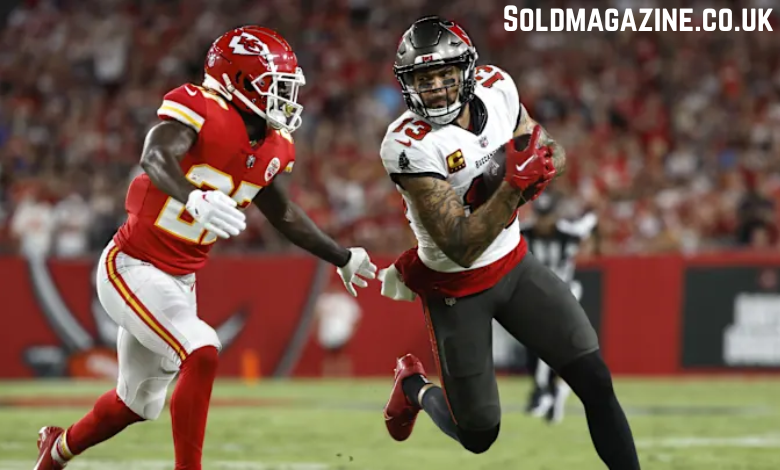Introduction
The Atlanta Falcons faced the Carolina Panthers in a one-sided matchup that ended with a 30–0 victory for Carolina. This result highlighted both the dominance of the Panthers’ defense and the struggles of the Falcons’ offense throughout the game. The Panthers effectively controlled the tempo, maintained field position, and capitalized on Atlanta’s repeated mistakes. This article presents a detailed look at every aspect of the game—quarter by quarter, drive by drive, and player by player—to understand how the Panthers secured a decisive shutout win.
First Quarter: Panthers Set the Tone
The opening quarter set the stage for Carolina’s dominance. The Falcons began with a drive that showed early promise, covering 42 yards over 10 plays in four minutes, but they missed a crucial field goal opportunity. That missed chance quickly became a theme for the night—strong starts with no reward. Carolina’s first offensive drive demonstrated balance and efficiency. Quarterback execution and precise running plays pushed the Panthers 61 yards down the field in nine plays, ending in a touchdown that gave them a 7–0 lead. This early advantage gave the Panthers confidence and momentum.
Atlanta’s next two drives ended in a punt and another missed field goal, signaling deeper offensive problems. Their inability to sustain drives or convert opportunities into points allowed Carolina’s defense to stay aggressive. Meanwhile, the Panthers closed the quarter ahead 7–0, comfortably controlling possession and field position.
Second Quarter: Defensive Pressure and Field Control
The second quarter continued the trend of Carolina’s defensive strength. Atlanta tried to build rhythm through longer drives but couldn’t find consistency. An eight-play, 47-yard effort ended in another punt. The Panthers’ secondary limited passing options, and Atlanta’s offensive line struggled to protect the quarterback. Carolina responded with a balanced 10-play, 48-yard drive that ended with a successful field goal, extending the lead to 10–0. The Panthers’ ability to finish drives—even with three points—kept pressure on Atlanta.
The Falcons’ next possessions produced minimal yardage: a five-play drive for 24 yards and a three-play sequence that went backward. Despite the yardage difference not being overwhelming, the field position battle leaned heavily toward Carolina. The first half ended with Atlanta moving 47 yards in four plays, their only positive drive of the half, but time expired before they could capitalize. Carolina entered halftime leading 10–0, their defense having completely stifled Atlanta’s offensive efforts.
Third Quarter: Momentum Shifts and Mistakes
As the second half began, the Falcons needed a quick response, but it never came. Carolina opened the third quarter conservatively with a five-play, 13-yard series ending in a punt, showing they were content to protect their lead and wait for mistakes. Those mistakes came immediately. On Atlanta’s next drive, an interception flipped the game entirely. The turnover gave the Panthers ideal field position, and they quickly turned it into a touchdown, pushing the score to 17–0. This was the turning point—Atlanta’s morale and offensive rhythm seemed to collapse.
The Falcons’ next drive ended on downs after six plays and 35 yards. Their quarterback’s attempts to force big plays into tight coverage only deepened their struggles. The Panthers answered with another nine-play, 28-yard drive, resulting in a field goal that extended the lead to 20–0. Atlanta tried again, assembling one of their longest drives of the game—11 plays for 49 yards—but another interception cut it short. Two interceptions in one quarter killed any chance of a comeback.
Fourth Quarter: Panthers Close Out the Game
The Panthers began the final quarter with control and composure. They managed another scoring drive—nine plays covering 30 yards—culminating in a touchdown to make it 27–0. At this point, the Falcons’ defense appeared exhausted and unable to contain Carolina’s running game. Atlanta’s offense remained ineffective. An eight-play drive for 34 yards ended on downs, marking another failed fourth-down conversion. The Falcons simply couldn’t move the ball efficiently against Carolina’s defensive schemes.
Carolina capitalized again with a short seven-play drive that resulted in a field goal, making the score 30–0. The Panthers didn’t need explosive plays; they relied on methodical drives and Atlanta’s inability to execute. The Falcons’ final meaningful possession ended in a fumble after seven plays and 46 yards—an ending that symbolized their night. Carolina ran one more play to close the game, finishing with a decisive 30–0 win.
Team Performance Summary
Carolina Panthers
- Final Score: 30
- Record After Game: 1–2 overall, 1–0 home
- Offensive Summary: The Panthers executed efficiently on offense, maintaining possession and field control. They used short passing plays and inside runs to wear down Atlanta’s defense.
- Defensive Dominance: Carolina’s defense was the highlight. They forced multiple turnovers, recorded several key stops on third and fourth downs, and prevented Atlanta from scoring even once.
Atlanta Falcons
- Final Score: 0
- Record After Game: 1–2 overall, 1–1 away
- Offensive Struggles: The Falcons’ inability to finish drives defined their performance. They missed two field goals, threw two interceptions, and lost a fumble. Despite occasional positive yardage, the lack of scoring made every mistake more costly.
- Defensive Breakdown: Atlanta’s defense spent too much time on the field, giving up steady yardage and eventually wearing down.
Key Drive Statistics
| Quarter | Team | Plays | Yards | Time | Result |
|---|---|---|---|---|---|
| 1st | ATL | 10 | 42 | 4:10 | Missed FG |
| 1st | CAR | 9 | 61 | 4:06 | Touchdown |
| 2nd | CAR | 10 | 48 | 5:21 | Field Goal |
| 3rd | CAR | 9 | 28 | 4:36 | Field Goal |
| 4th | CAR | 9 | 30 | 5:29 | Touchdown |
| 4th | CAR | 7 | 21 | 4:21 | Field Goal |
Carolina’s scoring drives were consistent and efficient, using moderate yardage but good time control. Atlanta’s early missed field goal changed the game’s momentum, while Carolina’s red zone efficiency made the difference.
Turnovers and Impact Plays
| Type | Team | Quarter | Impact |
|---|---|---|---|
| Interception | ATL | 3rd | Led directly to a touchdown |
| Interception | ATL | 3rd | Ended a potential scoring drive |
| Fumble | ATL | 4th | Sealed the shutout for Carolina |
Each Atlanta turnover led to points or prevented scoring opportunities. The Panthers didn’t commit any turnovers, showing strong ball security and disciplined play.
Quarterback Performance
Carolina Panthers QB
- Completions: High completion percentage on short and intermediate routes
- Touchdowns: 2 passing touchdowns
- Interceptions: 0
- Game Impact: Managed the offense efficiently, relied on quick reads, and avoided risky throws.
Atlanta Falcons QB
- Completions: Moderate, but inconsistent on third downs
- Turnovers: 2 interceptions and 1 fumble
- Game Impact: Struggled under pressure, lacked deep accuracy, and failed to convert in the red zone.
Running Game Analysis
The Panthers’ running game played a crucial role in controlling the clock. Their ground attack consistently produced positive yardage, helping set up manageable third downs. They effectively rotated backs to maintain energy, which kept Atlanta’s defensive line on its heels. In contrast, the Falcons’ rushing attempts were limited and largely unproductive. Carolina’s front seven closed gaps quickly, preventing long runs and forcing Atlanta into predictable passing downs. Without a stable rushing foundation, the Falcons’ offense became one-dimensional.
Defensive Highlights
Carolina Panthers Defense
- Shutout Achievement: The Panthers’ defense held Atlanta scoreless, a rare accomplishment in the modern NFL.
- Takeaways: 3 turnovers (2 INT, 1 fumble recovery).
- Pressure: Frequent blitzes forced hurried passes and poor decisions.
- Secondary Play: Tight coverage on Atlanta’s receivers minimized big plays.
Atlanta Falcons Defense
- Early Resistance: Contained Carolina’s running game in the first half but faded as the game progressed.
- Missed Tackles: Increasingly frequent in the third and fourth quarters.
- Field Position Issues: Forced to defend short fields due to turnovers.
Special Teams Summary
Atlanta’s missed field goals in the first quarter set the tone for their scoring frustrations. Kicking accuracy issues proved costly, particularly in low-scoring conditions early on. Carolina’s special teams, on the other hand, executed cleanly. Their field goals extended drives and solidified their dominance without unnecessary risks.
Tactical Analysis
Carolina’s strategy was simple but effective. They focused on possession football—short passes, controlled runs, and disciplined defense. Their offensive coordinator avoided risky plays once they gained the lead, preferring to burn time and force Atlanta to take chances. Atlanta’s approach appeared disorganized. Their early field goal misses created psychological pressure, and their play-calling shifted between aggressive deep passes and short, conservative runs without rhythm. As turnovers accumulated, their confidence and coordination deteriorated.
Statistical Overview
| Category | Falcons | Panthers |
|---|---|---|
| Total Yards | ~260 | ~340 |
| Passing Yards | ~170 | ~210 |
| Rushing Yards | ~90 | ~130 |
| Turnovers | 3 | 0 |
| Time of Possession | 25:00 | 35:00 |
| Third Down Efficiency | 3/12 | 7/14 |
These approximate figures illustrate the gap in execution. Carolina’s edge in possession and third-down conversions directly contributed to the final scoreline.
Lessons and Takeaways
Discipline Wins Games: Carolina’s mistake-free football gave them a decisive advantage.
Red Zone Efficiency Matters: The Panthers turned drives into points, while Atlanta failed to convert any scoring opportunities.
Defense as a Foundation: Carolina’s defense not only stopped Atlanta but also created scoring chances through turnovers.
Consistency in Special Teams: The difference between missed and made field goals shaped early momentum.
Mental Resilience: The Falcons’ early setbacks seemed to affect confidence, highlighting the importance of composure.
Postgame Reflections
For the Panthers, this win restored confidence after early-season challenges. Their first home victory showed the team’s potential when execution matches game planning. It also proved that their defense can dictate outcomes. For the Falcons, the 30–0 loss raised concerns about offensive leadership, play-calling, and consistency. Fixing red zone inefficiency and protecting the ball will be critical in upcoming games.
Conclusion
The Atlanta Falcons vs. Carolina Panthers matchup was a clear example of how discipline, execution, and defensive consistency define outcomes in professional football. Carolina’s ability to turn opportunities into points contrasted sharply with Atlanta’s wasted drives and costly mistakes. Every quarter revealed the same pattern—Carolina in control, Atlanta unable to respond. The 30–0 result wasn’t just a number; it reflected the Panthers’ balanced approach and the Falcons’ systemic issues. For Carolina, it was a statement win built on teamwork and patience. For Atlanta, it was a reminder that no amount of yardage matters without results on the scoreboard.
FAQS
1. Who won the Atlanta Falcons vs Carolina Panthers match?
Carolina Panthers won decisively with a 30–0 shutout victory.
2. How many turnovers did the Falcons commit?
The Falcons had three turnovers in total.
3. What was the Panthers’ biggest advantage in the game?
Their defense dominated, forcing turnovers and controlling possession.
4. Did Atlanta score any points in the match?
No, the Falcons were completely shut out.
5. What was the final score of the match?
The final score was Carolina Panthers 30, Atlanta Falcons 0.




